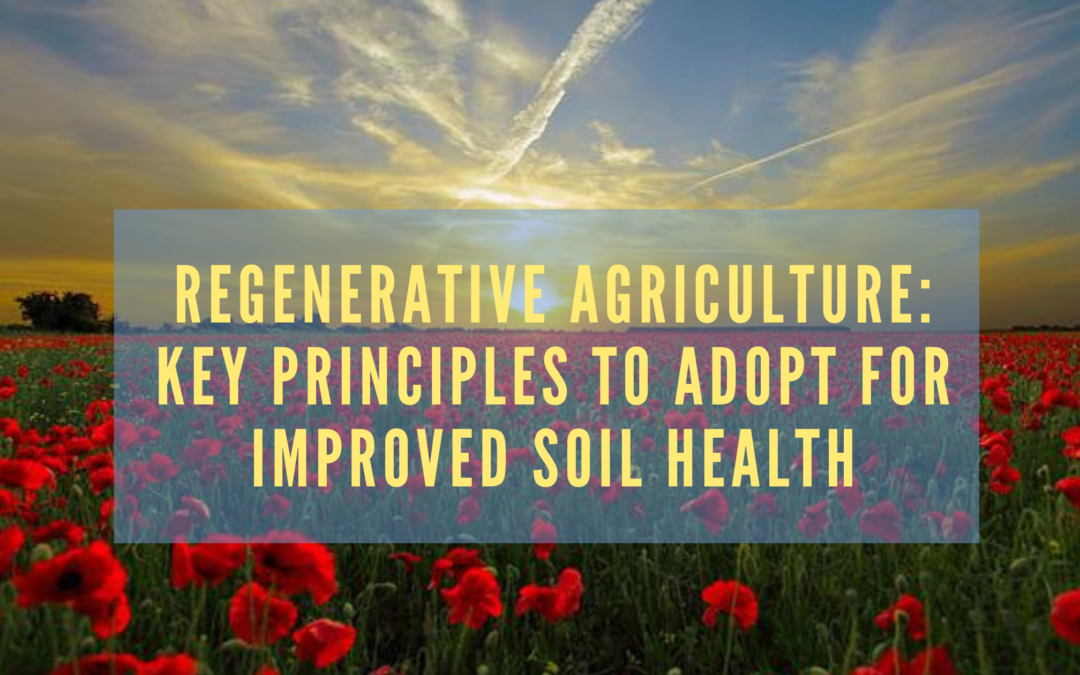Regenerative agriculture is a way of farming that’s based on certain practices that are aimed at improving soil health. The practice helps in conserving and restoring soil organic matter by protecting macro-organisms and cycling nutrients. When soil health is improved, it results in reduced soil erosion and water conservation.
Regenerative agriculture is based on an approach that puts soil at the center of the agricultural processes so as to produce sustainability and efficiency. Regenerative agriculture requires a complete shift from conventional farming practices. The adoption of regenerative agriculture is based on some key principles such as reduced tillage of land, planting of cover crops for continuous nourishment of the soil, and maintenance of better balance.
Here are some of the key principles of regenerative agriculture to adopt;
Planting of Permanent Cover Crops
Unlike conventional farming which doesn’t produce cover crops systematically between crop production periods; the continuous presence of cover crops enables the ecosystem to produce a sufficient amount of biomass. This in turn increases soil organic matter and also improves fertilization properties. Permanent cover crops have the potential of improving the physical, biological and chemical components of the soil. Cover crops, therefore, help in recreating soil health and capital.

Planting of More Diversified Crop Rotations
Diversification of plant species can effectively control the spread of pathogens, weeds, and insect pressure, and that in turn limits the use of pesticides and insecticides. Engaging in diverse crop rotation improves soil structure by diversifying rooting zone lengths which then promotes infiltration of water. Different crops have different nutrient needs and also produce different types of waste which then leads to a more balanced ecosystem.
Biological Control of Pests Organisms
Biological control is a common term that’s used for pest reduction through natural means. Such as the use of pathogens, parasites, and predators. Healthy soil should have a range of pathogens, predators, and parasites that contributes to the suppression of agricultural pests. Insects such as ground beetles play an important role in agro-ecosystems as they contribute to the mortality of insects, slugs, and weed seeds.
Fungi are some of the beneficial soil organisms that contribute to the various aspects of soil health. Fungi tend to form a symbiotic association with the plant roots which is a close association with other different species. About 80 percent of the plants on land tend to form a symbiotic relationship with fungi and such enables the plants to acquire phosphorus which is a valuable nutrient that exists in the soil. Fungi also help in improving soil aggregation by producing a glue-like element that makes the soil stick together.
Regulation of Water and Air in the Soil
Plants require both water and air around the root zone so as to grow well. In soil, water and air get held up in the spaces that exist between soil aggregates and soil particles. The size of the soil particles and aggregates determines the way water and air get to move through the soil. Having larger pores helps with promoting rapid infiltration and good aeration of rainfall to the soil.
P. S: – Are you looking for more insight into ecology, sustainability, and the environment? Ecolonomic Action Team has a team of environmental enthusiasts and sustainability experts that share their experiences and ideas on how to make the planet better. Visit our EAT Community and get to interact with the team. Yes, you can make some money making the planet better!


Recent Comments